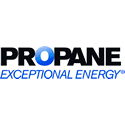
| Tuesday, September 04, 2012 | Archives | Advertise | Online Buyer's Guide | FLEETSolutions |
Obama Administration Finalizes 54.5 mpg Fuel Efficiency Standards
The standards issued by the U.S. Department of Transportation (DOT) and the U.S. Environmental Protection Agency (EPA) build on the Administration’s standards for cars and light trucks for Model Years 2011-2016, which raised average fuel efficiency by 2016 to the equivalent of 35.5 mpg. Achieving the new fuel efficiency standards is expected to encourage innovation and investment in advanced technologies. The final standards were developed by the National Highway Traffic Safety Administration (NHTSA) and EPA following extensive engagement with automakers, the United Auto Workers, consumer groups, environmental and energy experts, states, and the public. Last year, thirteen major automakers, which together account for more than 90 percent of all vehicles sold in the United States, announced their support for the new standards. The Administration’s combined efforts represent the first update to fuel efficiency standards in decades. Together, they propose to save American families more than $1.7 trillion dollars in fuel costs, resulting in a possible average fuel savings of more than $8,000 by 2025 over the lifetime of the vehicle. For families purchasing a model Year 2025 vehicle, the net savings will be comparable to lowering the price of gasoline by approximately $1 per gallon. Additionally, these programs can dramatically reduce reliance on foreign oil, saving a possible total of twelve billion barrels of oil and reducing oil consumption by more than two million barrels a day by 2025 – as much as half of the oil imported from OPEC daily. The standards also represent progress to reduce carbon pollution and address climate change. Combined, the Administration’s standards propose to cut greenhouse gas emissions from cars and light trucks in half by 2025, reducing emissions by 6 billion metric tons over the life of the program – more than the total amount of carbon dioxide emitted by the United States in 2010. President Obama announced the proposed standard in July 2011, joined by Ford, GM, Chrysler, BMW, Honda, Hyundai, Jaguar/Land Rover, Kia, Mazda, Mitsubishi, Nissan, Toyota, and Volvo, as well as the United Auto Workers. The State of California and other key stakeholders also supported the announcement and were integral in developing this national program. Major auto manufacturers are already developing advanced technologies that can significantly reduce fuel use and greenhouse gas emissions beyond the existing model year 2012-2016 standards. In addition, a wide range of technologies are currently available for automakers to meet the new standards, including advanced gasoline engines and transmissions, vehicle weight reduction, lower tire rolling resistance, improvements in aerodynamics, diesel engines, more efficient accessories, and improvements in air conditioning systems. The program also includes targeted incentives to encourage early adoption and introduction into the marketplace of advanced technologies to dramatically improve vehicle performance, including:
In response to the release of fuel economy rules for model year 2017-2025 passenger cars and light trucks, Bill Underriner, Chairman of the National Automobile Dealers Association, issued the following statement: |
 |
NAFA Fleet Management Association 125 Village Blvd., Suite 200 Princeton, NJ 08540 Telephone: 609.720.0882 Fax: 609.452.8004 |








